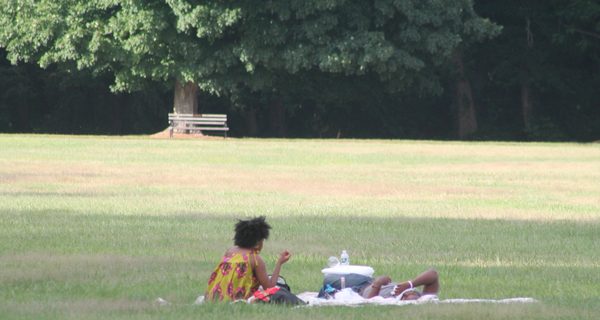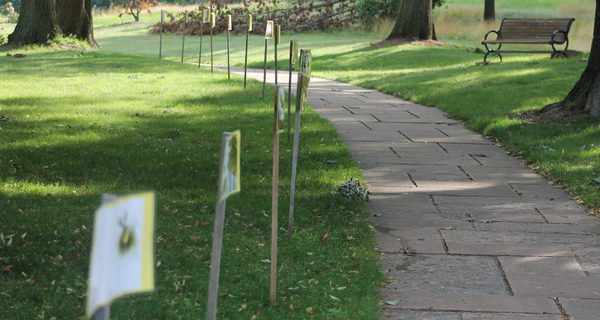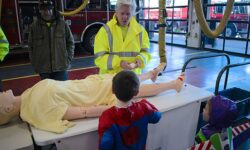The closeness of the story pages meant the StoryWalk wasn’t very long.
By James Kinneen
Hometown Weekly Reporter
Indoor venues are likely going to have to have some interesting deals and zany promotions to get people through their doors. Because of the coronavirus, people just aren’t going to be as willing to spend time in a bar, restaurant, play place or even library - unless there’s something really enticing to get them through the door.
Since it is outside, picturesque and very large, Bird Park doesn’t really need anything like that. People will go there looking to get out of the house, even if they offer nothing more than a large patch of grass to sit on. As a bonus, though, the park is currently hosting a StoryWalk, wherein people essentially read a book by walking along a designated path, viewing a page at each stop. The StoryWalk, which began on July 11, is a perfect excuse for younger people to visit.

While there will probably be more StoryWalks on the horizon, the current book, which will be up through this Sunday, is “Because of an Acorn” by Adam and Lola Schaefer. Essentially, the book is a giant food web that shows how an acorn is eaten by a chipmunk, which is eaten by a snake, which is, in turn, eaten by a bird, etc. However, it also acknowledges how acorns can become trees, how seeds become plants, and how all these plants and wildlife combine to create a forest.

The story itself is quite short, with its content totaling perhaps a paragraph if typed out all at once. The word count is far higher, though, when one factors in long paragraphs after the story has concluded, discussing what an ecosystem is, how vital forests are to humans, and what people can do to protect the forests. Clearly, this back page was written with parents and educators in mind.
One of the interesting things about the walk is how short it is. While it may have made sense to space out the pages more, or to put them somewhere where there might be wildlife (there was a woman with a net trying to catch a turtle in the pond when I was there, although it was very unclear why), all the pages are in a row, nearly on top of each other. The downside of this is that it's hard to find the StoryWalk, even when you're looking for it - never mind having any hopes of finding it while not.

A couple was picnicking at the park, while a couple kids were bicycling around the trail, to say nothing of the numerous people walking dogs. But, because the book pages were so close, it was hard to accidentally run into them, which was likely limiting the number of people that were engaging it. Perhaps if they do this again, organizers might consider putting pages in places where any children unaware of the walk could conceivably stumble upon it.
When it comes to keeping a child's attention, could they compete with a grown woman using an enormous net to try and catch turtles in the pond? Probably not. But on a different day, it might give them a fighting chance.






















